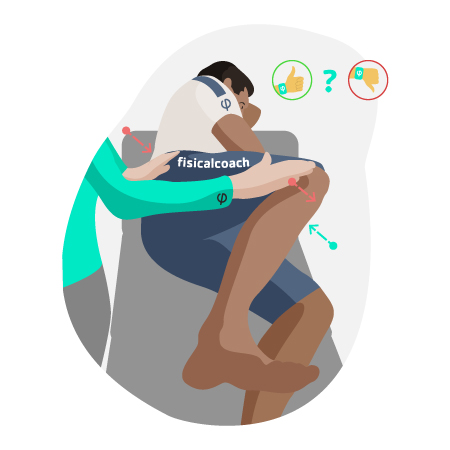
Active test for pyramidal syndrome
This test is very useful for assessing pyramidal syndrome or also known as “false sciatica”, which consists of a contracture or overload of the pyramidal muscle. Its symptoms are practically the same as those of lumbosciatica, but unlike lumbosciatica, it is not caused by compression of the sciatic nerve at the lumbosacral level (L5-S1).
- Required material: A physiotherapy couch. If the test is performed on the floor, a mat is required.
- Procedure: The assessor will stand on the side to be assessed. The subject is placed in lateral decubitus with the limb to be assessed in flexion and adduction and the healthy limb is placed in extension on the stretcher or floor. The evaluator stabilises the pelvis with one hand and with the other hand supports the knee to perform an internal rotation (increased tension in the pyramidal muscle), while the subject performs an abduction and external rotation (activation of the pyramidal muscle).
- Assessment: The test is considered abnormal or positive when any pain or discomfort is manifested throughout the manoeuvre. If no pain is present the test is considered normal or negative.
- Remarks: The existence of other pathologies that may manifest similar symptoms at the level of the spine or muscles of the lumbar region should be ruled out.
Take this test and 139 more in our App